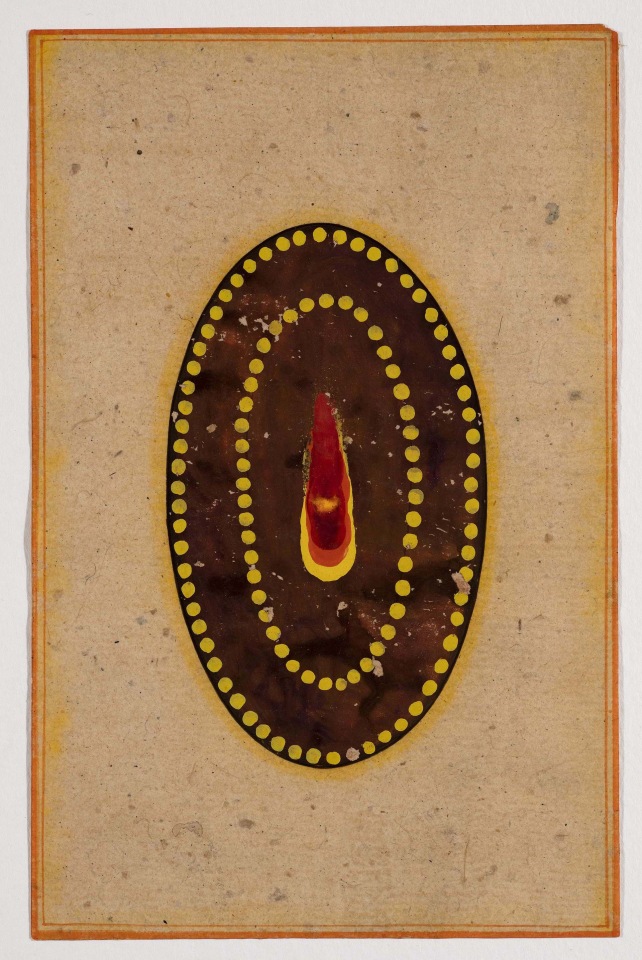Rajasthan, India
c. 2005
‘Man can no longer be the measure of all things. He is integrally bound with the life of all created things and in everything he seeks the underlying essence, the life-pervading truth of the universe. The world as seen in this state of awareness has been known to Tantra-shastras as the ‘subtle world’. By such inward contemplation, man acquires the power to remake his vision both of himself and the world.‘
(Ajit Mookerjee, Tantra Art its Philosophy and Physics, New Delhi, 1971, p.11.)
Tantric art from the earliest period of its existence was used as a meditational tool for Tantric practitioners as part of complex ritual practices. The adherents were not considered artists in any conventional sense and the images created were functional ritual objects, intended for personal use, rather than public display. As Mookerjee states in summary to his opening chapter on Tantra ‘art is not a profession but a path towards truth and self-realisation for both maker and spectator.’ (Ibid.) Most artworks were made anonymously, often using the most basic of materials, discarded papers and natural pigments. The paintings by the anonymous artists in the current exhibition have come from various sources, but all are likely to have been created in Northern India over the last sixty years. Furthermore, most have been created by artists who were originally trained in the miniature painting ateliers of Rajasthan.
Despite the comparatively recent date of the works in the exhibition, the imagery that appears in these paintings has ancient roots that straddle both Hindu and Buddhist traditions. Tantra as a philosophy and set of practices develops in India in about the 6th century C. E. Texts within the Hindu tradition appear as early as the 7th century, and by the following century these texts are being studied in Hindu, Buddhist and Jain monasteries across India, Tibet and Southeast Asia.
Focusing on the power of divine feminine energy, Tantra inspired the rise of goddess worship in medieval India, and today Tantric practice remains a vital force within multiple traditions. From the early 20th century it has influenced global countercultural movements throughout the world, and continues to influence contemporary feminist thought and artistic practice.
